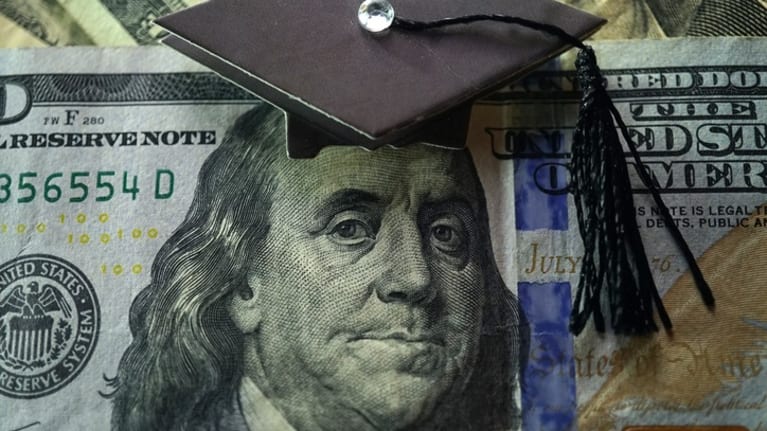

President Joe Biden announced the federal government will repay up to $10,000 of student loan debt for those earning less than $125,000 annually and further extended the COVID-19 student loan repayment moratorium through the end of this year. The moratorium had previously been extended only through Aug. 31.
According to the White House announcement and fact sheet issued on Aug. 24, the program will also cancel up to $20,000 in student debt for recipients of Pell grants, which the government awards to financially disadvantaged undergraduate students. In addition, the administration is proposing, through the Department of Education, a new income-driven repayment plan that will substantially reduce future monthly payments for lower- and middle-income borrowers.
The administration’s action comes as employers are considering student debt assistance for the coming year as part of their employee benefits packages.
Loan Assistance Employee Benefits
Student loan repayment assistance was offered by 7 percent of U.S. organizations at the start of 2022, down from 8 percent in 2020, according to the Society for Human Resource Management’s 2022 Employee Benefits Survey, which earlier this year drew responses from 3,129 HR professionals.
While the decline might show that businesses are dealing with tighter benefits budgets, it could also reflect employers’ uncertainty over the extent of the Biden administration’s efforts to cancel student debt.
Despite Biden’s announcement, “we can’t lose sight of the fact that there will still be significant amounts of outstanding student loan debt across the country,” said Kristen Carlisle, general manager at Betterment at Work, a provider of financial wellness benefits.
Some businesses are beginning to match employee contributions to their student loans, which she called “a cutting-edge benefit that we expect to increase in popularity to help employees combat this difficult financial burden.”
According to Lydia Jilek, senior director for voluntary benefits solutions at consultancy WTW, “we have seen mounting interest in the number of employers that want to assist employees with student debt and support the next generation with college coaching and scholarships. With the pause on interest and payments on federal loans coming to an end [Dec. 31, 2022] and employers seeking valuable benefit offerings, now is a good time for employers to consider revamping their education benefits.”
Tax-Advantaged Repayment Support
The Consolidated Appropriations Act, 2021, extended for five years COVID-19 relief that allows employer-provided student loan repayment as a tax-free benefit to employees under Section 127 of the Internal Revenue Code. Through 2025, employers can continue to make contributions of up to $5,250 per employee annually toward eligible education expenses, such as tuition or student loan assistance, without raising the employee’s gross taxable income.
Advocates of tax-advantaged loan benefits are lobbying Congress to make this change permanent.
Carlisle said she expects to see more movement to enable employers to help employees repay student loans “rather than a complete erasure of debt altogether. This could take the form of making permanent the temporary tax-incentives for businesses to subsidize student loan repayment as an employee benefit,” she noted.
Loan Relief Fairness
“President Biden’s new student debt measures will be welcomed, but modifying loan terms, or writing off debt, isn’t sustainable,” said Fadl Al Tarzi, CEO of Nexford University, which offers online undergraduate and graduate degree programs and career certification courses.
“Americans need higher education options without debt,” he added. “Write-offs just shift the burden to a large group of taxpayers and add to astronomically high public debt.”
Mike Rowe, whose mikeroweWORKS Foundation has created a scholarship fund to encourage people to learn about skilled trade careers, is also among those who have been critical of government student loan relief.
“I know guys who worked hard to get a construction operation running,” Rowe posted on Facebook earlier this year. “Some had to take out a loan on a big old diesel truck. Why should we forgive the cost of a degree but not the cost of a lease payment?”
Other critics have called federal loan “bailouts” unfair to students and families who worked hard to repay their loans or made education choices based on limiting the amount of debt they would accrue.
Pick-and-Choose Benefits
Similar arguments have been made about the fairness of employer-provided loan repayment assistance. In addition, providing debt-repayment can be expensive for employers.
To address these issues, some employers prefer to let employees swap existing benefits for debt relief, such as by converting unused paid-time-off (PTO) days into loan-repayment funds.
Another approach involves making 401(k) matching contributions into the retirement accounts of employees who are repaying student loans through payroll deferrals, even if those employees are not able to make elective 401(k) contributions. In other words, the 401(k) match is tied to the employee’s loan repayments instead of to the employee’s 401(k) contributions.
Although a 2018 IRS letter ruling approved of such a plan, some employers have been hesitant to put this type of matching program in place without legislative support.
Legislative authorization may be coming, however. In March, the U.S. House passed the bipartisan Securing a Strong Retirement Act, known as SECURE Act 2.0, which addresses student loan debt by treating “qualified student loan payments” the same as 401(k) employee deferrals, meaning that an employer can make retirement plan matching contributions when an employee makes qualified student loan payments. The Senate is expected to vote on its version of SECURE Act 2.0 later this year.
Related SHRM Articles:
Will Student Loan Repayment, at Long Last, Be a Game-Changer?, SHRM Online, January 2022
Consider the Benefits of Student Debt Repayment Plans, SHRM Online, September 2021

